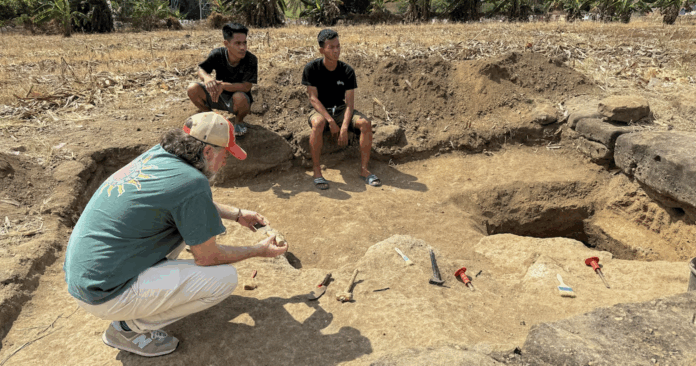Wallacean hominids, a term once relegated to the footnotes of prehistory, now bursts into the foreground with a vengeance: stone tools dating back over one million years have been unearthed in Sulawesi, challenging the official timeline of human presence in the Indonesian archipelago.
Wallacean hominids: the first trace of an unexpected migration
In Soppeng, southern Sulawesi, a joint Indonesian–Australian archaeological team uncovered seven stone artefacts, crudely shaped but clearly worked, dated to between 1.04 and 1.48 million years ago. These shards suggest a human hand long before our own species ever walked the Earth.
This find aggressively redraws the migration map: Wallacean hominids were not confined to Flores or Luzon, as once assumed, but had already pushed deep into Wallacea, a cluster of islands separated from mainland Asia by treacherous seas.
A critical reading of the “official” narrative
It is tempting to proclaim these artefacts as the handiwork of a bold Homo erectus, somehow breaching the Wallace Line. Yet no skeletal remains accompany the tools, leaving the identity of their makers cloaked in uncertainty.
The official story, of primitive humans without seaworthy craft somehow crossing vast stretches of open water, rings suspiciously smooth. If these hominids could reach Sulawesi so early, why do we find no older traces elsewhere? And why do they suddenly reappear in our record after a silence of a million years? Such gaps do not occur in nature without reason, they occur in narratives when something is missing.
Conclusion
In stubborn clarity, this discovery rattles the comfort of consensus: Wallacean hominids were present in these islands long before Homo sapiens emerged. As archaeologists sharpen their gaze on Sulawesi’s deep past, the scientific establishment wraps the story in chance and coincidence. But beneath the surface lies a sharper truth, waiting, like the tools themselves, in the quiet dark of Indonesian soil.



